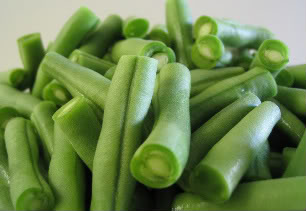Mountain House Vegetables: Freeze Dried and Dehydrated Vegetables

A selection of Mountain House vegetables will give a wider range of cooking options and the vitamins and nutrients contained in the food will greatly increase your long-term chances of survival.
The reasons for having freeze-dried vegetables as part of your survival pantry are many, but people who assume that they will be able to start growing their own vegetables as soon as they are set up in the base camp often overlook them. However, in the case of a nuclear strike or intense solar radiation, the soil may not be ready for crops for many months and the freeze-dried vegetables will see off any sort of scurvy or disease.
Pouch Packs
You'll quickly find that Mountain House vegetables normally come in #10 size cans, which hold around the same amount as five normal size canned, or just over three kilos worth of freeze dried vegetables. When you add water, this will generally create around three times the volume of vegetables, meaning that you'll only need a few of each type to keep you going.
However, the problem with such a big can is that once it's open, you'll then have to take along secure long-term storage to keep it fresh. While freeze-dried vegetables do keep for a good while, they will take on disease and rot if left open to the air for too long. To overcome this, you can buy Mountain House vegetables in cup size pouches that offer you the following options:
- Zipper pouch - the Mountain House pouches all come with a zipper top, meaning that they can be resealed if the eater wants to save some of their food for later. Each pouch holds around one cup of vegetables once the water has been added so the option of storing the rest for later is attractive if you're moving around or aren't sure where your next vegetables are coming from.
- Water resistant - most freeze-dried products come in large tubs that require you to have a separate container to pour the solids into before you add the boiling water. Mountain House have tried to remove this complication, making their pouches strong enough to resist boiling water which means that you can simply add the water to the pouch and wait. The zipper top also means you can trap the heat, cooking the vegetables in a much quicker time.
- Portable - in a survival situation, various members of your survival team will need to go out for extended periods of time, whether it's hunting, getting firewood or scouting the local area for other survivors. Taking enough food will prove a problem, which is where freeze-dried pouches will be an ideal solution. They will still need to make a fire to boil the water, but this makes more sense than carrying large amounts of fresh food with them.
Vegetable Options
The Mountain House vegetables range isn't enormous, but you'll find enough to add to various soups, stews, and casseroles to make it worth getting some of each type. The most common ones are green beans, garden peas and sweet corn, all of which carry a large amount of useful vitamins and nutrients as well as fiber to help bulk out most dishes.
As with all new food types, small samples of Mountain House vegetables are available to try ahead of time. You'll need to check them for taste as well as practicing how to use them in your cooking. Reconstituted vegetables don't have the same crunch and texture as fresh vegetables so you may need to adapt your recipes to cater for the new ingredients.
Return from Mountain House Vegetables to Survival Food





New! Comments
Have your say about what you just read! Leave me a comment in the box below.